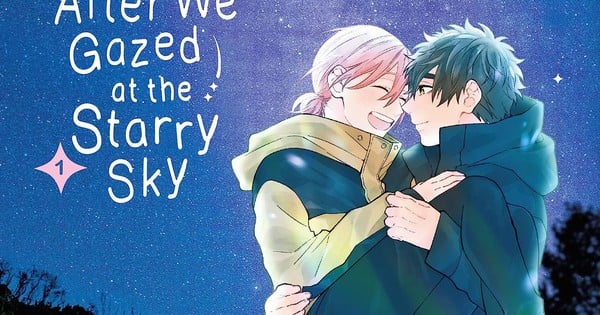After We Gazed at the Starry Sky Manga Volume 1 Review
It’s always good – and important – to see representation in our fiction. It can help those of us who don’t quite fit the mold of “normal” to find solace and enhance our imaginations, to show that no matter who we are, we can have adventures. Bisco Kida‘s BL romance After We Gazed at the Starry Sky stars a protagonist who uses a wheelchair; graphic designer Subaru was born paralyzed below the knees and has used a chair his entire life. While this sort of disability isn’t as rare to see in romance fiction as it once was (speaking of romance as a global genre), it’s still important to have it on the page.
With that said, however, this volume does come with a couple of big “buts” that need to be mentioned. There’s a definite air of Tougo playing the role of able-bodied savior at times, showing Subaru that he is just as capable as anyone of going out and doing things. It isn’t egregious beyond the mere fact of its existence within the book; Subaru is living a full life before he meets Tougo and there’s mention that his parents have offered to take him on trips and that he was the one who declined. This could easily lead to an interpretation of Subaru’s anxiety holding him back rather than his physical body, and sometimes anxiety does need a supportive person to help you out of its fog. For me the larger issue is how Tougo physically interacts with Subaru: he moves Subaru’s wheelchair (and therefore Subaru) without permission and lifts him out of it without asking. It’s clearly meant to be a white knight moment, and Subaru doesn’t make any objections, but it’s still unsettling and can be read less as romantic and more as Tougo infantilizing Subaru. It’s not to say that it ruins the entire book, but it’s something to be aware of, and if you’re looking for a more grounded approach to a romance with a disabled lead, I’d go with Perfect World over this one. (And if you’re not sure why this isn’t okay, check out A Quick and Easy Guide to Sex and Disability by A. Andrews.)
Those issues are out of the way, After We Gazed at the Starry Sky‘s first volume is very sweet. Subaru is a successful graphic designer whose friend Akari is more than aware of his burning fanboy crush on astrophotographer Tougo, and when the planetarium she works at (for? It’s never quite clear what Akari’s job is) is preparing a collaboration with him, she asks Subaru to design the advertising pamphlet for the show. Subaru is beyond excited, and when Akari surprises him with Tougo in the flesh at the show preview, Subaru can barely get words out. Tougo is both touched and intensely embarrassed to meet someone who loves his work so much, and the two quickly form a friendship, which unsurprisingly builds into something more.
The story succeeds in showing how both Tougo and Subaru help each other to grow as people. Tougo has been resistant to photographing people since his mother died, and the plot is smart enough to frame this less as a true restriction to his success and more as a way that he hasn’t yet fully processed his grief. He indeed prefers skyscapes to human subjects, but even with that personal preference, there’s something more going on beneath the surface. Subaru helps him to understand that and to work through it simply by listening and being supportive and enthusiastic about anything that Tougo cares to take pictures of. His unconditional fondness only grows as he gets to know the other man as a person rather than just an artist he idolizes, and that’s lovely to see. Tougo, on the other hand, tries to offer Subaru not just opportunities to go more places, but also the reassurance that using a wheelchair doesn’t restrict him from traveling to remote locations. Despite some of the previously outlined issues, we see Tougo learning to understand Subaru’s life more and more the longer they know each other and trying to accommodate him without being condescending. Both men come to care about who the other is as a person rather than just being defined by what they do for work or how they get around.
Kida’s art is easy to read and pleasant to look at. It does a particularly nice job of showing the men getting more comfortable with each other without having to spell it out in block letters, and if body language isn’t always perfect, it is easy to see them shifting from friendship to love. There is one nonexplicit sex scene at the end of the volume, but otherwise, this is very tame, with barely even any kissing and most of the romantic action coming across in their words. All in all, this is a very soft, sweet story, and if the things mentioned at the beginning of this review aren’t dealbreakers, it’s a cozy read.
Disclosure: Kadokawa World Entertainment (KWE), a wholly owned subsidiary of Kadokawa Corporation, is the majority owner of Anime News Network, LLC. Yen Press, BookWalker Global, and J-Novel Club are subsidiaries of KWE.
